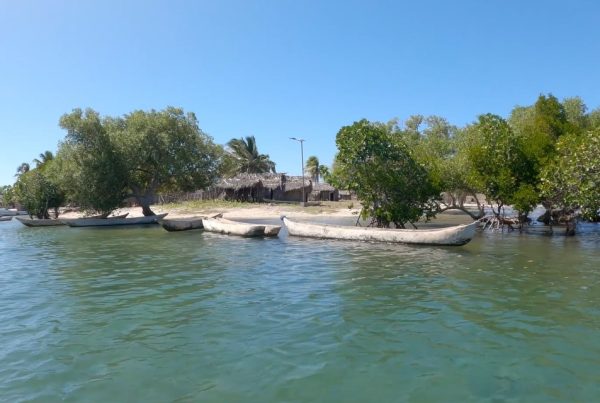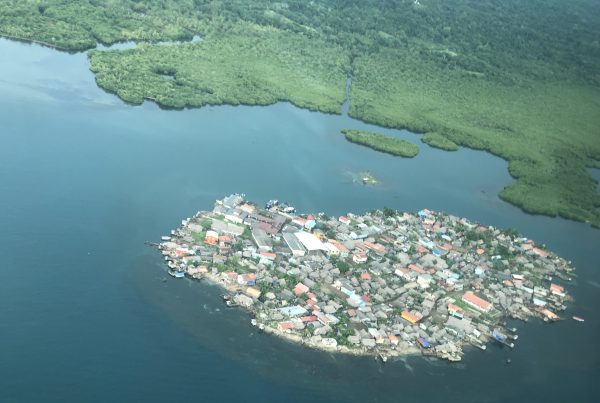We are potato farmers and papa arariwa (guardians of the native potato), passionate in the conservation of our native potato diversity now and for future generations. I live in the Community of Paru Paru.
My community is one of the six that make up the Potato Park, established in the year 2000 in collaboration with Asociación ANDES.1 Our home is near Pisaq, Cusco, in the heart of the Sacred Valley of the Incas.
The Potato Park is an Indigenous Biocultural Territory. We call it “Papa Ayllu” because it is modelled on the Andean Ayllu system[footnote]The Ayllu’s three elements, auqi (the sacred), sallqa (the wild) and runa (the domesticated) are bound together through reciprocal relationships known as ayni. Ayllu and ayni celebrate ecological systems that support agricultural activity.[/footnote], which is a holistic community where humans (and domesticated species), the wild, and the sacred, live together in harmonious and reciprocal co-existence. This model is key for maintaining the habitats and the evolutionary processes that have created the potato germplasm. The Ayllu model helps us to maintain potato genetic diversity along with other domesticated and wild species and the diverse habitats where they thrive. In turn this helps to maintain healthy wildlife and pollinators, and we have better decomposition of organic matter and soil fertility.
My land, Peru, is a territory blessed with diversity. Our mountains have marked variations in elevation and microclimates. The efforts of our ancestors have made this land one of the world’s most important centres of plant domestication and diversification. We have adapted and farmed diverse crops in all altitudes2. For us, however, the potato is the most important food crop. Over 2,000 different varieties are known to our peoples in Southern Peru alone. At the outset of the Potato Park initiative we collected 778 varieties from our own and surrounding communities; later we added 85 varieties through community to community exchanges and donations. The Park now has a total collection of 1,430 potato cultivars, 410 of which were incorporated through a Repatriation Agreement signed with the International Potato Centre (CIP) in 2004. This agreement led to the restitution of the diversity of the Park and also to recognition of indigenous peoples’ rights relevant to the conservation and sustainable use of biodiversity.
Other crops in the collection include unique Andean tubers and grains. The Park harbours six of the nine existing cultivated potato species, two semi-cultivated species and six wild relatives. We farmers recognise and name all these potatoes as distinct units. I myself farm around 150 cultivars of native potato in my community, all different in shape, colour, texture and flavour. They are beautiful. My brothers and sisters do the same in their communities. Our indigenous knowledge, particularly of the women, is responsible for the high number of varieties we have in the pool of species used in our fields and kitchens. Women ultimately make the decisions about what variety to maintain, incorporate or discard from the repertoire of varieties we keep in our households.
Biocultural heritage improves our food security, our local economy, the resilience of the agro-ecosystems and thus the wellbeing of the Potato Park communities. Diversity helps us to continue to adapt our potato varieties to the heterogeneous and fast changing environment and makes them less vulnerable to pests, diseases and severe weather conditions that we face in the Andes.
In managing this great diversity, we have merged in-situ and ex-situ conservation strategies. Our in-situ conservation approach combines community seed banks (which are probably more dynamic than conventional gene banks because they are actively used by all community members) with the conservation of wild relatives within genetic reserves3, and the continued cultivation of potato genetic resources in our indigenous farms. This approach has minimised genetic erosion as well as generating endogenous plans4 based on traditional knowledge, which ensure that genetic variation is secure for the future.
The repatriation process has fostered a dynamic horizontal partnership with other scientists, creating exemplary collaborative partnerships based on written agreements and mutual respect with research centres, including national and international universities. These collaborations focus on complementarities and on producing new ideas and innovations from the cross-fertilisation of indigenous knowledge and science that benefits our communities.
The Potato Park is managed collectively by a decision-making body called the Association of Communities of the Potato Park. This leadership is an inter-community institution working for the collective. Local institutions function and coordinate with the leadership at various different levels of governance. These institutions have been effective in fostering local innovations based on their deep knowledge of the local environment and the application of customary rules, norms and protocols. Livelihood and income generation from crop diversity has been achieved by fostering local microenterprises, and the generation of benefits through these micro-enterprises has gone hand in hand with the promotion of the maintenance of crop diversity on farms. Government support, through the Peruvian Biodiversity and Biosafety Unit of the Environment Ministry, has been essential for both ex-situ and in-situ conservation at the Potato Park.5
Author
- Walter Quispe Huilcca, Paru-Paru Community, Potato park, Cusco, Peru; Quechua farmer and Coordinator of the Potato Park’s Participatory Plant Breeding Program
Ecosystems
- Tropical forests
Topics
- Conservation and sustainable use
- Food
- Incentives and finance
- Knowledge, culture and spirituality
- Governance
Type
- Short-form
Date
- This case study forms part of LBO-1, originally released in 2016.
References
- Association for Nature and Sustainable Development (ANDES) strives towards sustainable indigenous communities in the Peruvian Andes by building local capacity for the protection of biocultural resources, knowledge and rights.
- International Treaty on Plant Genetic Resources for Food and Agriculture
- Genetic Reserve Conservation is defined as “the location, management and monitoring of genetic diversity in natural wild populations within defined areas designated for active, long-term conservation”. Source: Maxted et al (1997: 340)
- “Endogenous development is based on local peoples’ own criteria of development, and takes into account the material, social and spiritual well-being of peoples”. See http://www.compasnet.org/ed_1.html.
- Sigüeñas, M. Management of Biodiversity and Conservation of Genetic Resources for Food and Agriculture in Peru. (2008). at <http://ir.tari.gov.tw:8080/bitstream/345210000/2917/1/publication_no135_17.pdf>


